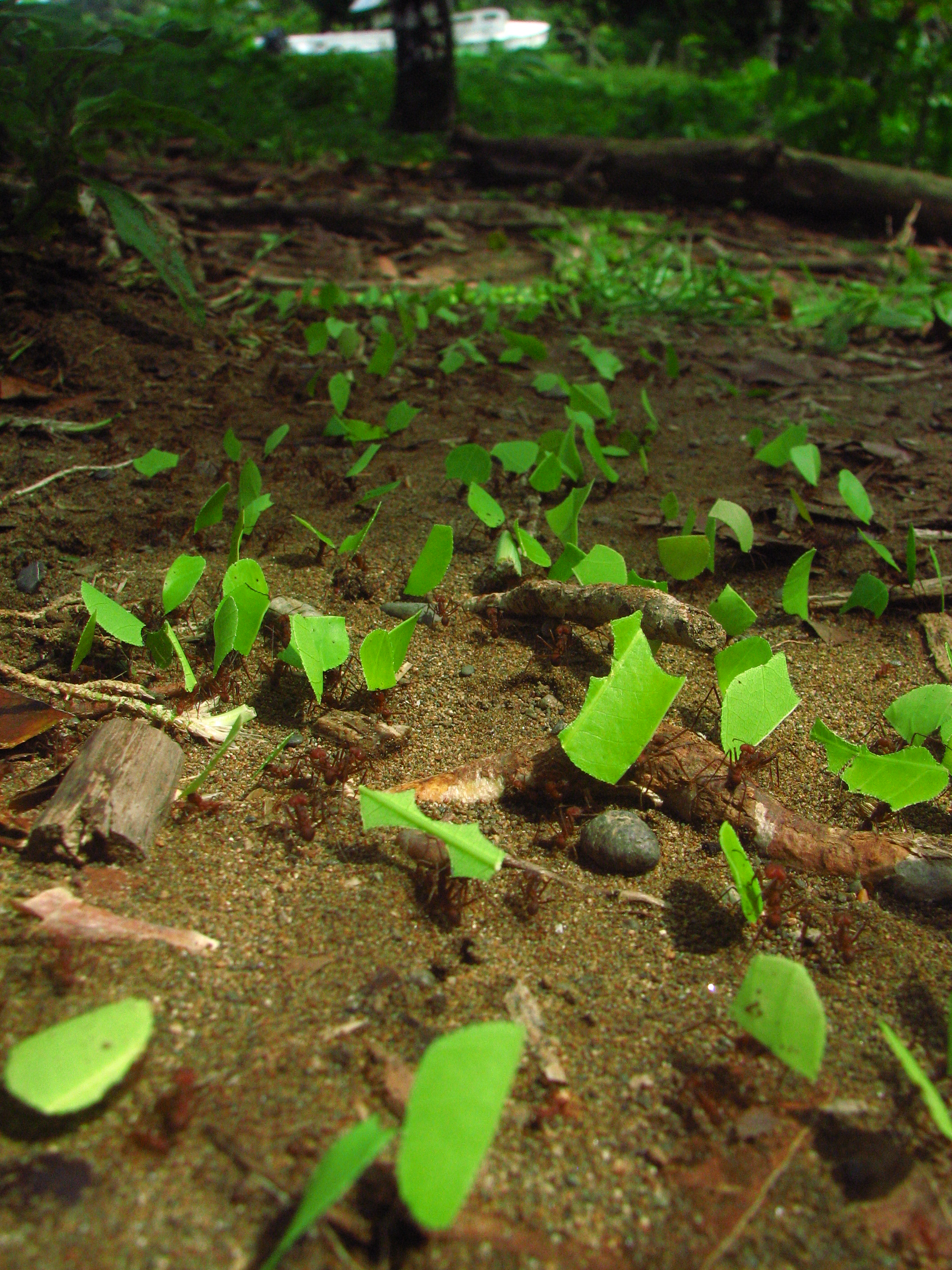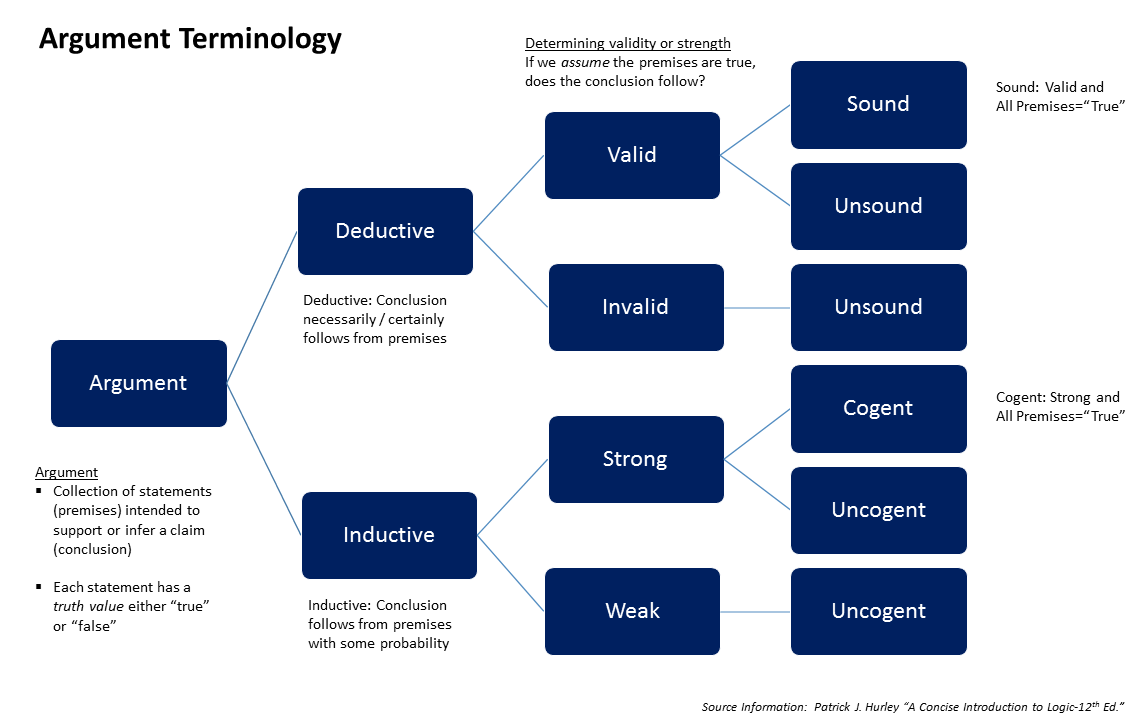The previously posted
http://adaptationfactory.blogspot.com/2016/10/a-rather-interesting-video-re.htm
I has made have this thought:
To address the the hardwired restraint of Hyperbolic Discounting,:
A long term need itself will need to be addressed in a planned (probably using iterative planning) series of short term rewards, that positively reward individuals in the ways consistent with the Socially Obligate Economical Boundary Condition.?
Friday, October 07, 2016
A rather interesting video re Anthropocene Science and Management from 2014
Maintaining Humanity's Life Support Systems in the 21st Century
https://www.youtube.com/watch?v=XKxkacvztCA
Tuesday, October 04, 2016
Northwest Passage
Arctic sea ice annual minimum ties second lowest on record
http://climate.nasa.gov/news/2496/arctic-sea-ice-annual-minimum-ties-second-lowest-on-record/Northwest Passage
Thursday, September 29, 2016
And now, a word from Bill
Thanks to David for the heads up on this one.
"The future of humanity depends on math. And the numbers in a new study released Thursday are the most ominous yet....
https://newrepublic.com/article/136987/recalculating-climate-math
"The future of humanity depends on math. And the numbers in a new study released Thursday are the most ominous yet....
https://newrepublic.com/article/136987/recalculating-climate-math
Sunday, September 18, 2016
Thursday, September 15, 2016
New Citizen Science Book
THE JOY CARDIN SHOW,
http://www.wpr.org/shows/how-citizen-scientists-will-save-world
Interview with the author of this book:
Citizen Scientist: Searching for Heroes and Hope in an Age of Extinction
Wednesday, September 14, 2016
Drop Your _____ and Grab Your Socks
'The Center for Climate and Security, in partnership with the Center for the National Interest and the George Washington University’s Elliott School of International Affairs, is hosting the first annual Climate and National Security Forum today..."
Statement
https://climateandsecurity.files.wordpress.com/2016/09/climate-and-security-consensus-project-statement-2016_09.pdf
Briefing Book for a New Administration
https://climateandsecurity.files.wordpress.com/2016/09/climate-and-security-advisory-group_briefing-book-for-a-new-administration_2016_091.pdf
Military Expert Panel Report on Sea Level Rise and the U.S. Military’s Mission
https://climateandsecurity.files.wordpress.com/2016/09/center-for-climate-and-security_military-expert-panel-report2.pdf
Intelligence Director on climate change as “underlying meta-driver of unpredictable instability”
https://climateandsecurity.org/2016/09/09/intelligence-director-on-climate-as-underlying-meta-driver-of-unpredictable-instability/
Transcript
https://www.dni.gov/files/documents/Newsroom/Speeches%20and%20Interviews/insa2016.pdf
Friday, September 02, 2016
The Arctic Blues & the Midwest
The decreasing summer & annual Arctic ice cover (in both surface area & thickness) is of keen interest to folks seriously looking at climate change adaptation in the continental U.S., especially in the Midwest and Northeast. This is because of the very strong role the Arctic has played in the character of the weather for "us folks down here"
A good resource that is tracking the change in the Arctic climate and weather is The Arctic Sea Ice Blog, at http://neven1.typepad.com/
A good example of the new and rapidly changing conditions up there, is in the very recent post on the Arctic Dipole 2016. That is related to winds pushing ice around, moving more open water to the pole, weather there and here.
Interesting stuff.
Tuesday, August 30, 2016
New Resource for Those working with Communities
Colleague David Liebl has published a new brochure to help educators working with their communities on climate resiliency. Addressed to Wisconsin but should be of general interest.
http://fyi.uwex.edu/climate/files/2016/08/ClimateWI2050-Communites-August-2016.pdf
Thursday, August 25, 2016
Energy Past and Future
In part of my writing/teaching,
I explore the existence of some of the boundary conditions that mold our
ability to find solutions to problems, and the long term implications thereof.
The most interesting one for me is what I call the Economic Socially Obligate Boundary Condition (ESOBC).
The
dominance of ESOBC upon our thinking, and another wetware element called Hyperbolic Discounting, helps explain how we will do an activity that is scientifically speaking questionable as to
sustainability, but pursued non-the-less.
One
of the useful tools for exploring ESOBC in application and understanding the process of adoption of energy sources is:
EROEI
Energy
returned on energy invested
“In
physics, energy economics, and ecological energetics, energy returned on energy
invested (EROEI or ERoEI); or energy return on investment (EROI), is the ratio
of the amount of usable energy delivered from a particular energy resource to
the amount of energy used to obtain that energy resource. It is a distinct
measure from energy efficiency as it does not measure the primary energy inputs
to the system, only usable energy.
A
fuel or energy must have an EROEI ratio of at least 3:1 to be considered viable
as a prominent fuel or energy source.”
Note:
“The natural or primary energy sources are not usually included in the
calculation of energy invested, only the human-applied sources. For example, in
the case of biofuels the solar insolation driving photosynthesis is not
included, and the energy used in the stellar synthesis of fissile elements is
not included for nuclear fission.” Ibid
Very
important note: Externalities are
also not included in mainstream EROEI analysis, which is problematic for sustainability.
EROI (energy return on
investment) is often used as a term for essentially the same thing, its virtue
being similarity with other ROI type measures commonly used. An example being
the suggested article; EROI of different fuels and the implicationsfor society,
For example, assuming that oil prices are "high enough", why fracking is "attractive":
“…analysis
indicates that the EROI ratio of a typical well is likely between 64:1 and
112:1, with a mean of approximately 85:1.”
(close to the EROI of coal). Journal of Industrial Ecology
Oh, and do not forget
Khazzoom–Brookes
postulate
“The
postulate states that "energy efficiency improvements that, on the
broadest considerations, are economically justified at the microlevel, lead to
higher levels of energy consumption at the macrolevel."This idea is a more
modern analysis of a phenomenon known as the Jevons Paradox. In 1865, William
Stanley Jevons observed that England's consumption of coal increased
considerably after James Watt introduced his improvements to the steam engine.
Jevons argued that increased efficiency in the use of coal would tend to
increase the demand for coal, and would not reduce the rate at which England's
deposits of coal were running out.”
Lets add some depth, or why the picture of Leaf Cutter ants at the top of this post
UW Madison Prof.
Timothy F. H. Allen provides a nice cross-disciplinary bridge between the
biologic and the “economic”.
Specially
recommended reading:
A very Useful Graphics set re the Warming
Thanks to Mary for the heads up on this one;
This graphics page from Bloomberg, is useful for explaining the different inputs on atmospheric temperature and why the anthropogenic input is the culprit.
http://www.bloomberg.com/graphics/2015-whats-warming-the-world/
This graphics page from Bloomberg, is useful for explaining the different inputs on atmospheric temperature and why the anthropogenic input is the culprit.
http://www.bloomberg.com/graphics/2015-whats-warming-the-world/
Wednesday, August 24, 2016
This Explains Alot
“the argumentative theory of reasoning—proposes that instead
of having a purely individual function, reasoning has a social and, more
specifically, argumentative function. The function of reasoning would be to
find and evaluate reasons in dialogic contexts—more plainly, to argue with
others.”
A very short video about it:
https://www.youtube.com/watch?v=Cduyyif7BVY
The Argumentative Theory A Conversation with Hugo Mercier
https://www.youtube.com/watch?v=Cduyyif7BVY
The Argumentative Theory A Conversation with Hugo Mercier
The Original Paper:
Why do humans reason? Arguments
for an argumentative theory
Tuesday, August 23, 2016
PETM in the News
| From WeatherUnderground |
Paleoclimatologists have been very interested in finding an analog in the past for our current rapid warming. A period of high interest among researchers is the The Paleocene–Eocene Thermal Maximum (PETM), aka "Eocene thermal maximum 1" (ETM1). Looking at analogs is important for adaptation planning since while not exact example by any means, it also can give broad stroke glimpse of possibilities. For example, we have acidification of the oceans in progress. The same occurred during the PETM with the fossil record helping us examine an example of a mass extinction of shelled sea life, that went through a bottleneck at that time. Of course, relevance is limited. The carbon loading and temperature increase rate in the PETM was spread over a a much longer period than ours is and will be. in our "worst case" scenario aka business as usual models, and past/current measurement, it is occurring over just a few centuries.
If you work in the area of adaptation, I recommend reading the new paper Anthropogenic carbon release rate unprecedented during the past 66 million years (2016) In Nature Geoscience, with full text PDF available through esholarship.org @ http://escholarship.org/uc/item/2t94z0x7#page-1
This paper, among other things, takes a really close look at tempo/rate*
Quoting from the paper.
"As rapid reductions in anthropogenic carbon emissions appear increasingly unlikely in the near future, forecasting the Earth system’s response to ever-increasing emission rates has become a high priority focus of climate research. Because climate model simulations and projections have large uncertainties – often due to the uncertain strength of feedbacks – geologic analogues from past climate events are invaluable in understanding the impacts of massive carbon release on the Earth system..."
Recommended
*As comedian Tony Robinson says, "In climate change as in comedy, it is all in the timing."
Wednesday, August 17, 2016
A Good Context Review for Use in Short Attention Span Theatre
Nobel Laureate Murray Gell-Mann said a few decades ago, that what we really needed in education was some kind of "crude look at the whole".
This "Big History" video series would be a good thing for everyone to watch, before they start to work together on well, anything? It teaches about the big context...
Big History Crash Course
https://www.youtube.com/playlist?list=PL8dPuuaLjXtMczXZUmjb3mZSU1Roxnrey
Information overload: A crude Look At the Whole
part one
part two
Visualizing the Anthropocene
 |
| http://artistsofutah.org/15bytes/11sep/page4.html
Given how how brains and senses evolved, we find some types of visualization difficult. That difficulty is both spatial and temporal. Many scientists tells use we are in a in a epoch, the Anthropocene, (epoch of man). Chances are that if time allows, the International Commission on Stratigraphy and the International Union of Geological Sciences will eventually make it official. The current rapid climate change, river diversions, mountain top removal mining, The Great Pacific Gyre Garbage Patch, etc., we do not have a shortage of examples of our impact.
Yet, the ability to really see this is not a common skill. We are all each born into one spot in spacetime, and that point is our "normal", our moving point of reference along our world line.
I think one of the best ways to explore the minutiae of the epoch, and then be able to form a pattern-understanding is through the work of artist/photographer Edward Burtynsky.He has spent the last 35 years documenting the new epoch.
His TED Talks page
Trailer for Manufactured Landscapes
Trailer for Watermark
The Landscape that We Change, an illustrated lecture by Burtynsky at McMichael Canadian Art Collection, (2013)
Vital Liquids: Oil & Water, illustrated lecture at the 2013 PEI Conference.
An art criticism lecture by Clint Burnham, The Sublime Object, (2012)
|
Tuesday, August 16, 2016
Vertical Farming & Sustainability
A Greenbiz article of interest: LEED for vertical farms? Defining high-tech sustainable food
The newish Association for Vertical Farming
The Vertical Essay
Tuesday, August 09, 2016
Hot Business
Thanks to Mary for this one...
This is what Earth will look like in 100 years — if we're lucky
"At this point, you're probably fully aware of how hot it is. But in case you're unaware: It's really, really hot. ..."
http://www.businessinsider.com/climate-change-100-years-2016-8
Drying Out
 |
| Tucson jay moynihan |
What historic mega-droughts in the western US tell us about our climate future
http://theconversation.com/what-historic-megadroughts-in-the-western-us-tell-us-about-our-climate-future-37615A video by NASA of North American Drought Projections
Friday, August 05, 2016
Giving the Real Estate term "Under Water" another meaning...
Thanks to Mary for the heads up on this one.
The national real estate site Zillow is starting to address climate change in their research and information for customers.
Weather Channel piece:
https://weather.com/news/weather/video/climate-change-could-bring-flooding
Zillow's report
http://www.zillow.com/research/climate-change-underwater-homes-12890/
Wednesday, August 03, 2016
The Big Behavioral Picture?
An interesting take on cc by evolutionary biologist Bret Weinstein
https://www.youtube.com/watch?v=SjNRtrZjkfE
Risk Based Adapatation Plans
Being Prepared for Climate Change
A Workbook for Developing
Risk-Based Adaptation Plans
EPA Office of Water
August 2014
404.48
June 2016 CO2 level hit 404.48 ppm
http://climate.nasa.gov/vital-signs/carbon-dioxide/
And,an interesting video re the first 6 months of this year:
https://www.youtube.com/watch?v=JK7NV2YheGk
http://climate.nasa.gov/vital-signs/carbon-dioxide/
And,an interesting video re the first 6 months of this year:
https://www.youtube.com/watch?v=JK7NV2YheGk
Tuesday, August 02, 2016
Climate Change May Be an Issue in the 2016 Presidential Race
According to this NYT article, it is in the "forefront"
http://www.nytimes.com/2016/08/02/us/politics/climate-change-divide-bursts-to-forefront-in-presidential-campaign.html?_r=0
Monday, August 01, 2016
Mega Cities & Adaptation
90% of the earth's human population lives on or near coasts.
https://www.youtube.com/watch?v=ePSFNXsC7OQ
An interesting lecture about climate change, resilience in the urban context.
https://www.youtube.com/watch?v=ePSFNXsC7OQ
An interesting lecture about climate change, resilience in the urban context.
Tuesday, July 26, 2016
Minnesota Has a New State Office on Climate Change Mitigation
"Minnesota
Lt. Governor Tina Smith has announced the creation of the new Office of
Enterprise Sustainability.
The
new office will provide agencies assistance to reduce greenhouse gas emissions
and water usage, increase energy efficiency and recycling, and better
coordinate efforts across state government, according to a news release."
http://patch.com/minnesota/roseville/minnesota-establishes-new-office-fight-climate-change
Which reminds me, ah....California. Apparently climate change mitigation, adaptation, water tech are all part of the growth in the state's economy. Check out the information rich state portal page they have:
http://climatechange.ca.gov/
Which reminds me, ah....California. Apparently climate change mitigation, adaptation, water tech are all part of the growth in the state's economy. Check out the information rich state portal page they have:
http://climatechange.ca.gov/
A Report on Climate Change and Economic Production
"Our findings demonstrate that changes in temperature have substantially shaped economic growth in both rich and poor countries over the last half century, and that future warming is likely to reduce global economic output, relative to a world without climate change."
http://web.stanford.edu/~mburke/climate/
Decadal Climate Variability
National Academies of Sciences, Engineering, and Medicine. 2016.
Frontiers in Decadal Climate Variability: Proceedings of a Workshop. Washington, DC:
National Academies Press. DOI: 10.17226/23552.
"Many
factors contribute to variability in Earth’s climate on a range of timescales,
from seasons to decades. Natural climate variability arises from two different
sources: (1) internal variability from interactions among components of the
climate system, for example, between the ocean and the atmosphere, and (2)
natural external forcings, such as variations in the amount of radiation from
the Sun. External forcings on the climate system also arise from some human
activities, such as the emission of greenhouse gases (GHGs) and aerosols. The
climate that we experience is a combination of all of these factors."
Wednesday, July 20, 2016
The Wild Thing
 |
| Play Gresham by Jay Moynihan (2016) |
"Hey Kids! Go Outside, Already
This program was originally broadcast on March 26, 2015.American kids today spend only four to seven minutes a day playing outdoors. We hear a new call to raise the "wild child."In the space of a generation, American children have been largely pulled out of nature. By one study, the average American boy or girl now spends, on average, just four to seven minutes a day outdoors. There are all kinds of reasons, but at heart it’s a lifestyle change. More screens, more protectiveness, more scheduled lives. American kids under what some call “house arrest.’ My guest today says that childhood divorce from nature is costing us, our children, dearly in physical and mental health and more. This hour On Point, getting the kids back to nature. Raising the “wild child." -- Tom Ashbrook
Guests
Dr. Scott Sampson, dinosaur paleontologist and chief curator at the Denver Museum of Nature and Science. Author of the new book, "How To Raise A Wild Child: The Art and Science of Falling In Love With Nature." Host and science advisor of the PBS Kids series, "Dinosaur Train."
Erin Kenny, co-founder and director of the Ceadarsong Nature School. Author of Forest Kindergartens: The Cedarsong Way. "
Monday, July 18, 2016
Complexity & Water Management
View Under Bridge, From River Walk in Tucson, jay moynihan (2014)
Water management is a wicked problem, but not an unsolvable one
By Christa Brelsford, Arizona State University-Santa Fe Institute Center for Biosocial Complex System..."
Friday, July 08, 2016
The Challenge and Fun of Working on Adaptation
 |
| Henry Cox, cook, Australia 1985. by William Allard. From the Sugar Train for National Geographic Magazine |
This radio reminds me of how we cannot take anything for granted in our path through rapid change.
http://www.sciencefriday.com/segments/as-the-climate-warms-what-toll-will-heatwaves-take/
The guest in the radio spot runs the National Center for Disaster Preparedness of Columbia University
Thursday, June 30, 2016
Sounds Like a Doubter to Me Ray*
"Chris Hedges sits down with Tim DeChristopher, founder of the Climate Disobedience Center. The two analyze how the industrialized world fails to significantly confront climate change, beginning with the “exercise in make-believe” that was the 2015 Paris climate conference."
http://www.truthdig.com/avbooth/item/days_of_revolt_chris_hedges_tim_dechristopher_discuss_20160426
* In homage to the skit "A Funny Thing Happened On The Way To The Inquisition " on Dear Friends by the Firesign Theatre (1972)
Tribal Government CCA Resources
I recently co-facilitated a workshop concerning climate change adaptation for staff of a tribal government. In preparing for that, i came across some cool links.
ORCA
Database
"ORCA
is a searchable database developed by the Institute for Tribal Environmental
Professionals (ITEP) - you can search for news articles, videos and audios,
adaptation planning guidebooks and tools, assessments and reports, and much
more."
Adaptation
Planning Tool Kit
"This
"toolkit" is a collection of templates and other resources developed
by the Institute for Tribal Environmental Professionals (ITEP) to assist tribes
in their climate change adaptation planning process. The materials provided are
not "one-size-fits-all" solutions, and users are encouraged to modify
the materials to better represent the needs and priorities of their own tribe.
The primary users of these materials will be the tribe’s climate change working
group.
Adaptation
Planning Background Material
Checklist
Template:
Tribal Climate Change Adaptation Planning Guide
Template:
Tribal Resolution for a Climate Change Adaptation Initiative
Worksheet:
Adaptation Planning
Spreadsheet:
Adaptation Planning
Template:
Tribal Climate Change Adaptation Plan
Guides
and Tools for Climate Change Adaptation Planning
Example
Tribal Climate Change Assessments and Plans”
Tribal
Climate Change Guide
Pacific
NW based, but of general value. Some rare sections, such as funding.
“The
BIA Tribal Climate Resilience Program
"goal is the mainstreaming of climate
considerations at the project level through leadership engagement, delivery of
data and tools, training and tribal capacity building. Direct funding supports
tribes, tribal consortia, and authorized tribal organizations to plan for
climate resilience through competitive awards for tribally designed climate
training, adaptation planning, vulnerability assessments, supplemental
monitoring, capacity building, and youth engagement. The ocean and coastal
management effort supports planning, science and tools, and capacity for
coastal tribe's ocean management. Ocean and coastal proposals need not address
only climate related concerns.”
Whyte,
K.P., M. Dockry, W. Baule, D. Fellman, 2014.
Supporting Tribal Climate Change
Adaptation Planning Through Community Participatory Strategic Foresight
Scenario Development. In: Project Reports. D. Brown, W. Baule, L.
Briley, and E. Gibbons, eds. Available from the Great Lakes Integrated Sciences
and Assessments (GLISA) Center. http://glisa.umich.edu/media/files/projectreports/GLISA_ProjRep_Strategic-Foresight.pdf
Thursday, June 23, 2016
Suggested Reading
"The Anthropocene Review, a trans-disciplinary journal issued 3 times per year, brings together peer-reviewed articles on all aspects of research pertaining to the Anthropocene, from earth and environmental sciences, social sciences, material sciences, and humanities. High impact research articles, authoritative and stimulating reviews, and brief ‘perspective’ articles are especially welcome. Its overall aim is to communicate clearly and across a wide range of disciplines and interests, the causes, history, nature and implications of a world in which human activities are integral to the functioning of the Earth System."
Wednesday, June 08, 2016
A New Guide to the Buzzing Confusion
"Climate Feedback organizes scientists from around the world to comment on the accuracy of a variety of climate change media articles using the emerging technology of web annotation. Scientists’ comments, or ‘annotations’ are layered directly onto the original texts allowing readers to easily identify where and why the coverage is consistent (or inconsistent) with state-of-the-art thinking and knowledge in climate science.
Intro video: https://www.youtube.com/watch?v=GYsNYvO6uVk
Climate Feedback assigns each article a “credibility” rating based on the annotations and evaluations made by the participating scientists, giving readers an overall guide to the accuracy of the text. We call these evaluations ‘Feedbacks’.
All Feedbacks will be archived on our site, creating a useful resource for anyone to easily compare and contrast the credibility of different news sources."
http://climatefeedback.org/Intro video: https://www.youtube.com/watch?v=GYsNYvO6uVk
"Boomerangs versus Javelins"
"For advocates of climate change action, communication on the issue has often meant “finding the right message” that will spur their audience to action and convince skeptics to change their minds. This is the notion that simply connecting climate change to the right issue domains or symbols will cut through the political gridlock on the issue...."
http://www.realclimate.org/index.php/archives/2016/06/boomerangs-versus-javelins-the-impact-of-polarization-on-climate-change-communication/
http://www.realclimate.org/index.php/archives/2016/06/boomerangs-versus-javelins-the-impact-of-polarization-on-climate-change-communication/
Thursday, June 02, 2016
Friday, May 27, 2016
A Friday Post: Kim Robinson
An interesting talk by the author of my favorite cli-fi book.
Earth and Future Generations: Imagining Post-Capitalism
https://www.youtube.com/watch?v=Csvroehk7WwHow about a little bit of Kim & Ursula K. Le Guin?
another talk, Transformation without Apocalypse
https://www.youtube.com/watch?v=Qlp2WvtjeGk
Wednesday, May 25, 2016
Seat Belts, Cigarettes & Oil
"Oil Giants In A Changing Climate
How will the oil giants do business in the climate change future? Shareholders at Exxon, Chevron and more want to hear their plans. So do we."
http://onpoint.wbur.org/2016/05/25/climate-change-big-oil-paris-talks
http://onpoint.wbur.org/2016/05/25/climate-change-big-oil-paris-talks
Thursday, May 19, 2016
Damn the Pigoons, Full Speed Ahead?
"The goal of the pigoon project was to grow an assortment of foolproof human tissue organs in a transgenic knockout pig host - organs that would transplant smoothly and avoid rejection, but would also be able to fend off attacks by opportunistic microbes and viruses, of which there were more strains every year. A rapid-maturity gene was spliced in so the pigoon kidneys and livers and hearts would be ready sooner, and now they were perfecting a pigoon that could grow five or six kidneys at a time."
From Oryx and Crake, by Margaret Atwood. ( 2003)
Margaret did it again...
In Search For Cures, Scientists Create Embryos That Are Both Animal And Human
Friday, May 13, 2016
Does our Tech Mirror Our Biology?
Just a rumination.
While listening to a lecture today, I heard a person say that Photosynthesis & Combustion are opposites? Never thought about it like that. Lets see...
"Photosynthesis is a complex series of reactions carried out by algae, phytoplankton, and the leaves in plants, which utilize the energy from the sun. The simplified version of this chemical reaction is to utilize carbon dioxide molecules from the air and water molecules and the energy from the sun to produce a simple sugar such as glucose and oxygen molecules as a by product. The simple sugars are then converted into other molecules such as starch, fats, proteins, enzymes, and DNA/RNA i.e. all of the other molecules in living plants. All of the "matter/stuff" of a plant ultimately is produced as a result of this photosynthesis reaction. An important summary statement is that during photosynthesis plants use carbon dioxide and produce oxygen."
"Combustion occurs when any organic material is reacted (burned) in the presence of oxygen to give off the products of carbon dioxide and water and ENERGY. The organic material can be any fossil fuel such as natural gas (methane), oil, or coal. Other organic materials that combust are wood, paper, plastics, and cloth. Organic materials contain at least carbon and hydrogen and may include oxygen. If other elements are present they also ultimately combine with oxygen to form a variety of pollutant molecules such as sulfur oxides and nitrogen oxides.
Metabolism is the set of ...chemical transformations within the cells of living organisms. The three main purposes of metabolism are the conversion of food/fuel to energy to run cellular processes, the conversion of food/fuel to building blocks for proteins, lipids, nucleic acids, and some carbohydrates, and the elimination of nitrogenous wastes. ...Metabolism is usually divided into two categories: catabolism, the breaking down of organic matter by way of cellular respiration, and anabolism, the building up of components of cells such as proteins and nucleic acids. Usually, breaking down releases energy and building up consumes energy."
In Air Water Ground , I mention how what our species apparently does is externalize its morphology & metabolism; and we call that "technology". Yep, maybe so.
Subscribe to:
Posts (Atom)
































